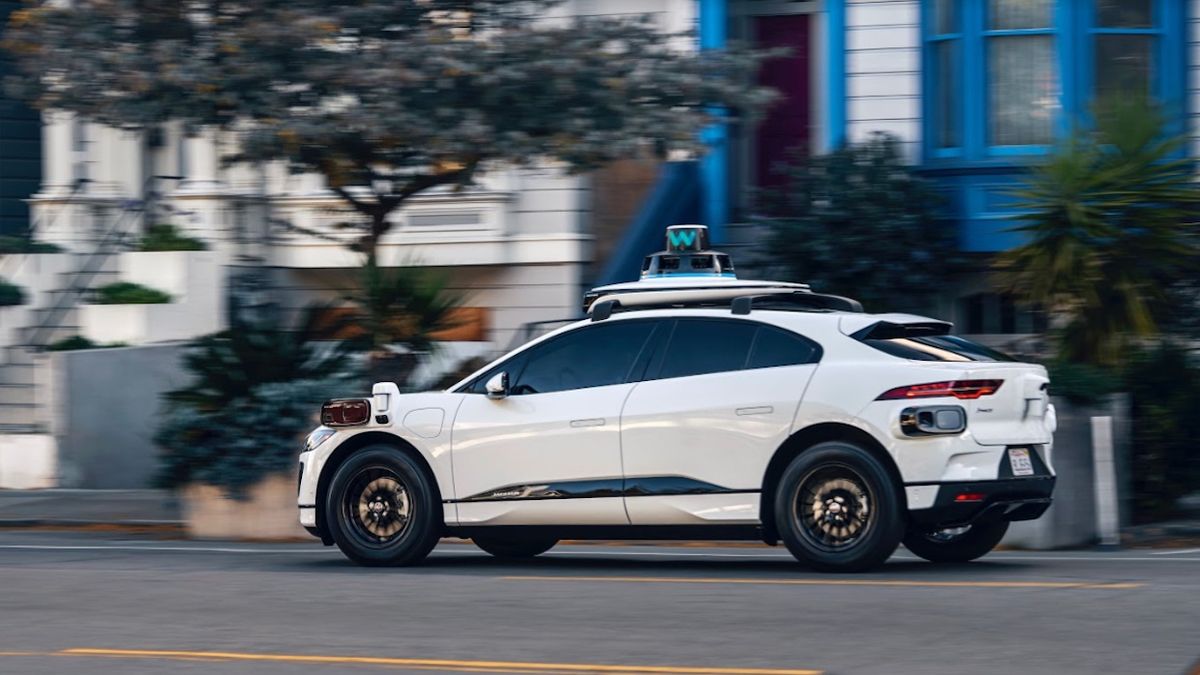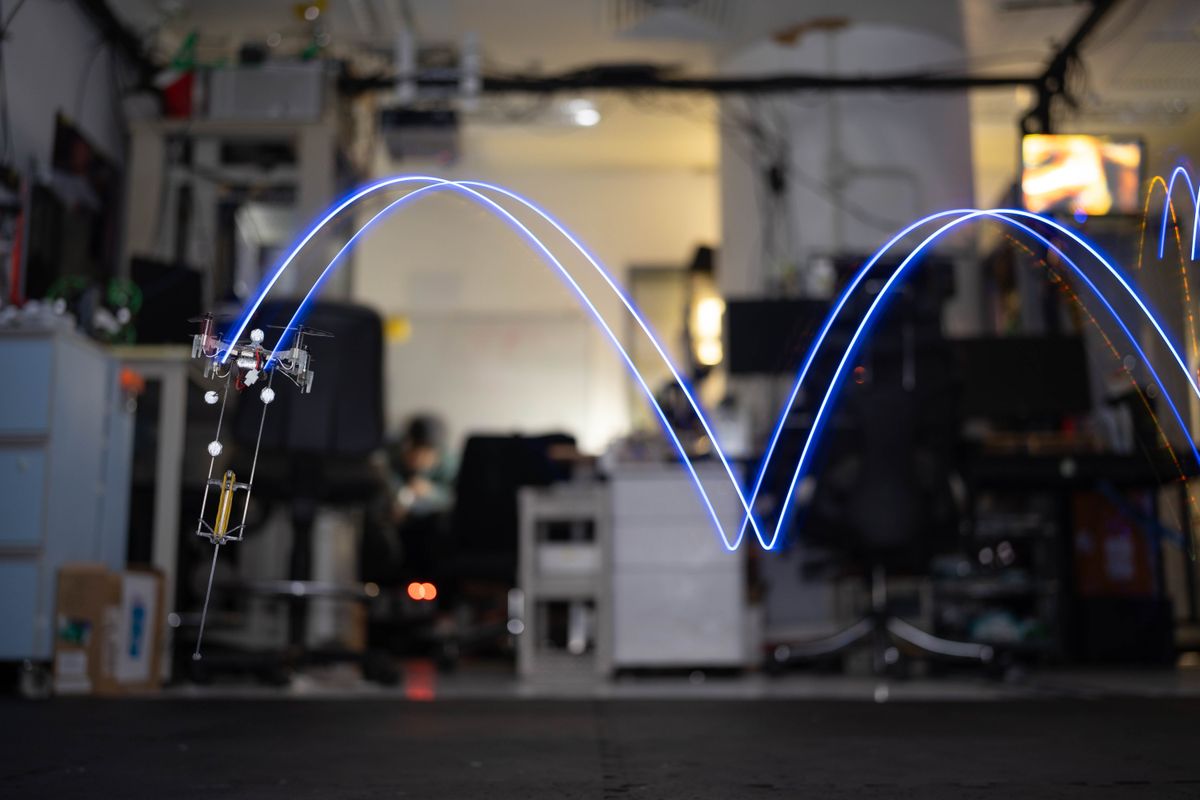Video Friday is your weekly selection of awesome robotics videos, collected by your Automaton bloggers. We’ll also be posting a weekly calendar of upcoming robotics events for the next few months; here’s what we have so far (send us your events!):
ICRA 2020 – June 01, 2020 – [Virtual Conference]
RSS 2020 – July 12-16, 2020 – [Virtual Conference]
CLAWAR 2020 – August 24-26, 2020 – Moscow, Russia
ICUAS 2020 – September 1-4, 2020 – Athens, Greece
Let us know if you have suggestions for next week, and enjoy today’s videos.
Flexible. All-weather. Human-centered. Take a detailed look at the core design considerations we took in building our fifth-generation Waymo Driver.
[ Waymo ]
This isn’t a Roomba, but we’ll let it slide.
[ YouTube ]
Shimon the robot performs Earth to See, written and composed by Shimon the robot.
And make sure and read our article about Shimon’s new album—with rap battles!
[ Shimon ]
Energy storage is particularly restrictive for micrometer- to centimeter-scale robots, vehicles, and electronics, as microbatteries dominate the size and mass of the corresponding devices. To address these limitations, we present a metal-air scavenger (MAS), a device that extracts electrical energy from metal surfaces to power robots, vehicles, and electronics.
[ UPenn ]
Here are a couple of interesting videos from HRI 2020:
In this project we present the design concept of RemindLy, a small egg-shaped robot with the purpose of reminding its user the daily to-do list. Users can interact with their RemindLy both using voice commands and physical interactions, designed as small to large tilting and rotations of the robot body. A small camera is placed on the robot to add a wake-up function when the face of the owner is recognized. To properly set-up the notes and customize the robot, a phone app will be developed.
[ Paper ]
MENOY is a social toy robot designed for children with autism. We designed a robot that focuses on developing healthy social habits in children by using a range of simple interactive motions such as handshakes, nodding and keeping eye contact. We aim to achieve this by having our robot being able to change its appearance and act like a toy, both entertaining and educating the child through practical interaction. MENOY can be used both autonomously, or controlled by professionals (Wizard of Oz).
[ HRI 2020 ]
Draganfly’s new pandemic drone technology is being tested by the Westport Police Department as a new “Flatten the Curve Pilot Program” ... The pandemic drone will be equipped with a specialized sensor and computer vision systems that can display fever/temperature, heart and respiratory rates, as well as detect people sneezing and coughing in crowds, and wherever groups of people may work or congregate. The technology can accurately detect infectious conditions from a distance of 190 feet as well as measure social distancing for proactive public safety practices.
[ Draganfly ]
Misty II is a friendly robot that can be used to screen for vitals like temperature. Perfect for eldercare facilities, clinics, or other businesses where screening is important. We can also work with you to fully customize the experience including the audio interaction flow, facial recognition if needed, access control integrations, data logging, additional sensing, and much more!
[ Misty Robotics ]
Drone teleoperation is usually accomplished using remote radio controllers, devices that can be hard to master for inexperienced users. Moreover, the limited amount of information fed back to the user about the robot’s state, often limited to vision, can represent a bottleneck for operation in several conditions. In this work, we present a wearable interface for drone teleoperation and its evaluation through a user study. The two main features of the proposed system are a data glove to allow the user to control the drone trajectory by hand motion and a haptic system used to augment their awareness of the environment surrounding the robot. This interface can be employed for the operation of robotic systems in line of sight (LoS) by inexperienced operators and allows them to safely perform tasks common in inspection and search-and-rescue missions such as approaching walls and crossing narrow passages with limited visibility conditions.
[ Paper ]
RE2’s electromechanical Maritime Dexterous Manipulation System (MDMS) features dual robotic manipulator arms that can be easily mounted onto a variety of third-party underwater remotely operated vehicles (ROVs). Like our HDMS dual-arm robot, MDMS features an open architecture, supporting the Joint Architecture for Unmanned Systems (JAUS) and Robot Operating System (ROS) communication protocols. This allows the system to be integrated with any JAUS or ROS-based robotic platform.
[ RE2 ]
Demonstration of a prototype spraying / disinfection robot, developed by the Control Systems & Robotics Laboratory, at the Hellenic Mediterranean University (Heraklion, Greece). The battery-operated mobile platform carries an electric knapsack sprayer with electronic flow control and a blower unit, mounted on a 2 dof robotic arm. The latter can be controlled to aim the spray at a specific direction or implement programmable sweeping motions. The system also provides for variable spray flow rate, including an operation mode where the flow rate is automatically adjusted in relation to the vehicle’s speed. Due to it’s compact size and skid-steer drive, the robot is highly maneuverable and can effectively navigate through indoor as well as outdoor environments. The current prototype is teleoperated via an R/C transmitter with live video feed from an onboard camera. Semi- or fully-autonomous operation can be obtained with the addition of appropriate sensor suites.
[ HMU ]
How to make sure your Mars rover gets browned evenly.
[ NASA ]
Not sure Quiznos would be our first choice here, but hey, the world needs more food delivery robots so kudos to ROBOTIS for this demo.
[ ROBOTIS ]
Experience the all-new CRX Series, FANUC’s latest collaborative robot designed to make installation and programming your cobots easier than ever before.
[ Fanuc ]
This is a fantastic idea: Chris Urmson, CEO of Aurora, answered a bunch of questions over video chat from the kids of the folks who work with him. There are a bunch, but my favorite was how Chris explained all of the different kinds of lidar. ALL OF THEM.
We expect every other robotics CEO to do this now.
[ Aurora ]
Here are two interviews from the Robotics for Infectious Diseases folks—and check out our article from earlier this week for more details.
John Criscione, MD, PhD, Vice Dean EnMed, Texas A&M University
James Lawler, MD, MPH, FIDSA, Global Center for Health Security, UNMC
[ R4ID ]
This is a 30-minute presentation about Tesla’s self-driving AI from Andrej Karpathy, Tesla’s senior director of AI. The part that you really don’t want to miss is just 2 minutes long, starting at 8:30, about just how tricky it can be to really understand how something as simple as a stop sign works.
[ ScaledML 2020 ]
Drones are being used in all kinds of ways in response to the pandemic. But which of these applications actually make sense? Which don’t? And which could potentially make sense? This webinar summarizes our findings on the different drone applications being championed in response to the pandemic.
[ WeRobotics ]
Evan Ackerman is a senior editor at IEEE Spectrum. Since 2007, he has written over 6,000 articles on robotics and technology. He has a degree in Martian geology and is excellent at playing bagpipes.
Erico Guizzo is the Director of Digital Innovation at IEEE Spectrum, and cofounder of the IEEE Robots Guide, an award-winning interactive site about robotics. He oversees the operation, integration, and new feature development for all digital properties and platforms, including the Spectrum website, newsletters, CMS, editorial workflow systems, and analytics and AI tools. An IEEE Member, he is an electrical engineer by training and has a master’s degree in science writing from MIT.



